Tropicals from CAST
The California Spring Trials is best known for introducing breeders’ new annuals varieties for the coming year. However, some tropicals can indeed be spotted among the calibrachoas and begonias. My colleagues at Ball Publishing who attended CAST a few weeks ago did find some appropriate items to include here.
This first item comes from colleague Jen Zurko:
Ball FloraPlant’s Tropica mandevilla/dipladenia assortment has been re-branded under the name “Tropica,” where four series and one collection are under one umbrella. They are:
Modesto—the compact, bush dipladenia type with Pink, Red and White.
Medio—the medium-bush with Strawberry, Red and White.
Grande—the medium-vining with Pink, Red, Merlot and an improved Citrine.
Grandiosa—the large, vining mandevilla series with Rose Pink and White.
Lastly, a collection of novelties called Unico with Fuchsia, Pink, Coral Orange Sunrise and Pink + Yellow.
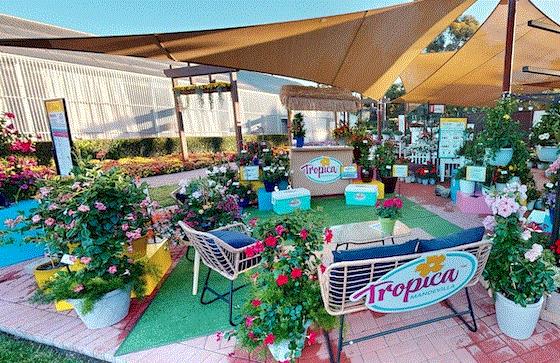
Ball Horticultural’s Katie Rotella sent along a sheet (below) that clarifies what these varieties had previously been called and how they now are arranged under the Tropica umbrella. I find that this visual helps me get them all in order. Thanks, Katie!
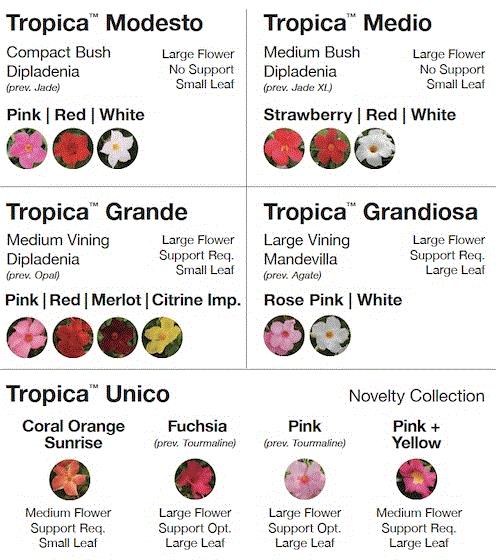

A Few More
Darwin Perennials, another Ball Horticultural Company, introduced a beautiful cascading sedum called Shamrock (I know, not a tropical but I cover succulents in the newsletter, too). I’m told it’s a dense mat of petite succulent foliage with green-to-chocolate-brown tones (I’m picturing mint chocolate chip ice cream for some reason). And there’s little to no flowering—all the more time to enjoy those petite, mint-chocolatey leaves! “It’s very petable!” Katie wrote. Hardy in USDA Zones 3a-9b.
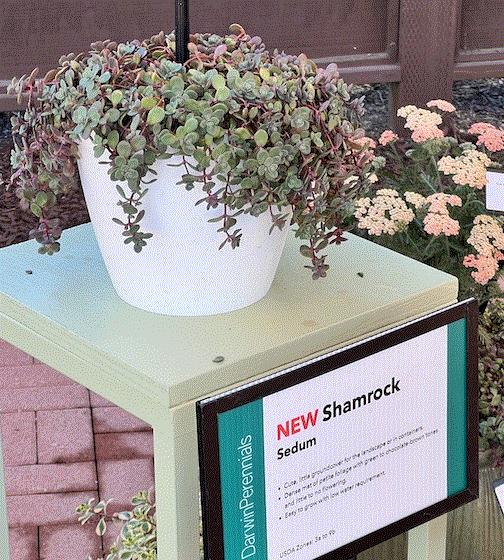
Back to mandevillas, but this time over to Syngenta. Their new intro is Madinia Petite Deep Red, a shorter version (10-12 in.) than Madinia Deep Red (14-18 in.). Everything a grower would want—early flowering, no vining and high-density production—and on a compact plant. The Petite has more branching than the original version, too. Jen Zurko wrote, “The red is really stunning—a nice, dark, velvet-like color.” Looks it!
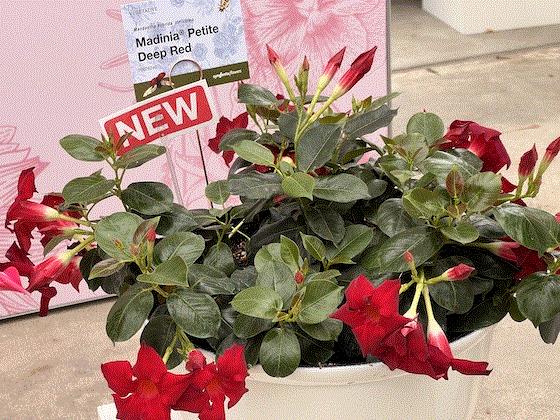
I will have a handful more from CAST in the next edition of Tropical Topics.

PHS Flower Show Trends
The Pennsylvania Horticultural Society just released its top trends that they teased out from their recent Philadelphia Flower Show. Assessing their floral and garden exhibitors, PHS found some commonalities in what styles were being used and which plants and florals were making waves. And you know, quite a few of them were apropos for including in Tropical Topics.
Here are the trends PHS spotted that you tropical and houseplant growers and lovers can put on your own radar.
Trending Houseplants. The Philly Flower Show’s competitive plant and flower area was dominated by three types of houseplants—aroids, begonias and gesneriads. Aroids as we know are everywhere, so no surprise there. The begonias that were trending are the more rare varieties. And as for the gesneriads, PHS said they saw a tremendous growth in this category, which includes African violets, Streptocarpus, Sinningia, Petrocosmia, Primulina and Kohleria.
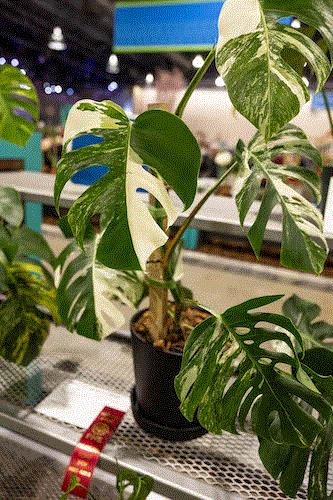
Terrariums. PHS also saw an explosion in this category at the Flower Show. Plant types being grown in terrariums were gesneriads, ferns and carnivorous plants (remember that a carnivorous plant won a TPIE Cool Product Award back in January). Terrariums are just self-contained lush tropical jungles, after all.
Floral Trends. In the way of colors, the PHS staff saw a lot of monotone, bold neon colors, especially oranges and pinks, at this year’s flower show. Color blocking was heavily employed in displays and booths, too. As for scale and style of floral displays, they were large, statement floral arrangements—I’ve often seen those created at TPIE, as well. And then specific to our industry, PHS noticed anthuriums are the hot cut flower of the moment. The more unique and vibrant the color, the better, as it adds an eye-catching pop to arrangements, sculptures and floral displays.
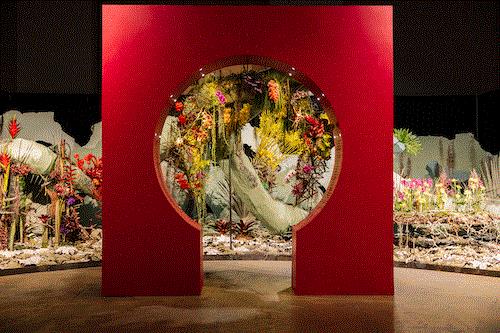
Photos courtesy of Pennsylvania Horticultural Society.

Who Sells the Best Houseplants Online?
Wirecutter did the research to answer that question. If you’re not familiar with Wirecutter, it’s essentially a Consumer Reports-esque review site for the 21st century. Need to know which mattresses are best? Looking for a set of luggage? Or perhaps an e-bike? Wirecutter has done the research (and if you want to do research on Wirecutter, listen to how the company got started on the “How I Built This” podcast).
Back to the best online houseplant sales site. Like I mentioned, Wirecutter’s staff of researchers does all the heavy lifting when it comes to comparisons. The “kick the tires,” if you will, on all aspects of the plant ordering procedure—from navigating the website to ease of ordering, arrival of the package, state of the plants and care/educational information included. And these researchers kick the tires hard, meaning they don’t hold back when it comes to what’s not up to snuff at any point in the process.
What is good though is they shower praise when praise is due. For instance, they routinely pick more than one “our pick” for their recommendations, and they pick them for different reasons because not everyone is buying plants (or mattresses or air fryers) with the same expectations or for the same purpose.
Anyway, I suggest you head over HERE to see which two online houseplant sales sites came out on top. And if you’re a retailer looking to start an online plant store, pay particular to what these researchers are giving thumbs up and down to. Some of them were surprising. Also, retailers, you’ll be happy to know that the Wirecutter folks said a brick-and-mortar store should be a plant buyer’s first option if one is accessible. Read all about that near the end of the article.
Comments, questions, suggestions? Email me about them at ewells@ballpublishing.com.

Ellen Wells
Senior Editor
Green Profit
This edition of Tropical Topics was sent to 29,483 loyal readers!
If you're interested in advertising on Tropical Topics, contact Kim Brown ASAP!